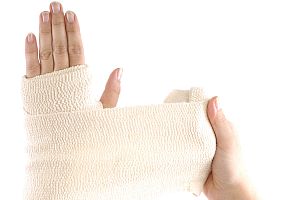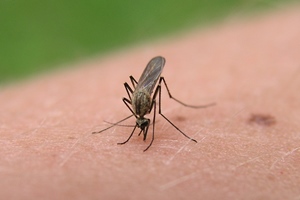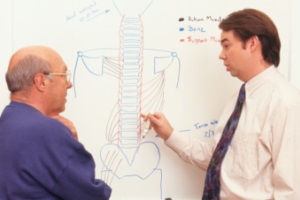Can Joint Injuries Really Cause or Accelerate Arthritis?
 A U.S. Centers for Disease Control and Prevention (CDC) study performed from 2007-2009 showed that at least 22.2% of adult Americans suffered from arthritis. The actual number could be higher than the CDC estimate, though, because these were self-reported and doctor-diagnosed cases. Naturally, no one knows how many unreported cases there are. Still, it’s reasonable to believe that this percentage will only become higher as the population ages.
A U.S. Centers for Disease Control and Prevention (CDC) study performed from 2007-2009 showed that at least 22.2% of adult Americans suffered from arthritis. The actual number could be higher than the CDC estimate, though, because these were self-reported and doctor-diagnosed cases. Naturally, no one knows how many unreported cases there are. Still, it’s reasonable to believe that this percentage will only become higher as the population ages.
The short answer to the question asked in the title of this article is “Yes”. Joint injuries really can cause or accelerate arthritis. The reason is simple. Arthritis is all about inflammation of the joint. Inflammation is a natural reaction of the body to injury, pathogens or irritants. Trauma or injury is a major cause of arthritic conditions. Various forms of arthritis, like osteoarthritis (the most common form), are degenerative—they get worse over time and with wear and tear. Once an arthritic condition is established, it will get worse unless the root cause is found and dealt with, or the symptoms are managed by drugs.
Dr. Joseph Borrelli Jr., chairman and professor of orthopedic surgery at the University of Texas Southwestern Medical Center, performed a study to see how post-traumatic arthritis (PTA) developed after an acute joint injury. Using an animal model, Borrelli found that trauma to the joint can lead to a range of acute lesions, including fractures to bones, ligament or meniscus tears and damage to the articular cartilage. These types of injury are often associated with bleeding in the area of the joint and cause post-traumatic joint inflammation. Despite the resolution of the acute symptoms, and the fact that some lesions could be surgically repaired, joint injury causes a chronic remodeling of the cartilage and other joint tissues that in a majority of cases eventually manifests as osteoarthritis.
The key seems to be in the chondrocytes. These are the cells present in healthy cartilage that help to produce and maintain it. When an acute injury occurs, these chondrocytes become inactive within a month, slowly reducing the structural integrity of the cartilage. Borelli said “In our PTA model, the cells became inactive almost immediately after injury and stopped producing these compounds [that maintain the cartilage]. He continued, “This may explain why PTA sometimes develops very quickly in patients after an injury, regardless of how successful we were in fixing the fracture. PTA can develop in just 6 months—unlike osteoarthritis, which may take up to 60 years to develop.”
PTA aside, serious joint injuries that are not addressed promptly can cause a range of problems down the road. By healing incorrectly or incompletely, joints can become susceptible to instability and re-injury. Weakened or unstable joints may also lead to other related injuries as the body changes its mechanics to compensate.
If you or someone you care about has recently suffered a back, neck or other joint injury, we can help! Proper treatment can make a big difference!





 With warm summer weather in the forecast, many people take the opportunity to spend more time in the great outdoors. Camping, hiking and boating are all on the agenda! But beware—being outside means sharing the wilderness with all of the creatures that live there. This includes the insects!
With warm summer weather in the forecast, many people take the opportunity to spend more time in the great outdoors. Camping, hiking and boating are all on the agenda! But beware—being outside means sharing the wilderness with all of the creatures that live there. This includes the insects! According to the National Institutes of Health and Dr. Michael S. Wilkes of the Western Journal of Medicine, “Despite a plethora of research intended to guide physicians in their management of back pain, physicians still hold strong non-evidence based beliefs dating back to the 19th century.” What beliefs is Dr. Wilkes referring to? He’s talking about the long-held conventional wisdom that says bed rest is one of the best ways to treat back pain.
According to the National Institutes of Health and Dr. Michael S. Wilkes of the Western Journal of Medicine, “Despite a plethora of research intended to guide physicians in their management of back pain, physicians still hold strong non-evidence based beliefs dating back to the 19th century.” What beliefs is Dr. Wilkes referring to? He’s talking about the long-held conventional wisdom that says bed rest is one of the best ways to treat back pain. Behind many of the debates about healthcare in the US—its availability and cost as well as its effectiveness—is an important phenomenon. The demands being placed on healthcare providers are growing and changing (at least in large part) because of the way we live our lives. Day-to-day choices we all make are contributing to a wide variety chronic health conditions that are sometimes referred to as “lifestyle diseases.” And while our healthcare system is very good at treating acute medical problems, it is not very good at preventing or treating chronic ones.
Behind many of the debates about healthcare in the US—its availability and cost as well as its effectiveness—is an important phenomenon. The demands being placed on healthcare providers are growing and changing (at least in large part) because of the way we live our lives. Day-to-day choices we all make are contributing to a wide variety chronic health conditions that are sometimes referred to as “lifestyle diseases.” And while our healthcare system is very good at treating acute medical problems, it is not very good at preventing or treating chronic ones. For many people, summertime just isn’t summertime without a barbecue! It’s a generations-old cultural phenomenon that combines three things American families love—food, family and fun!
For many people, summertime just isn’t summertime without a barbecue! It’s a generations-old cultural phenomenon that combines three things American families love—food, family and fun!